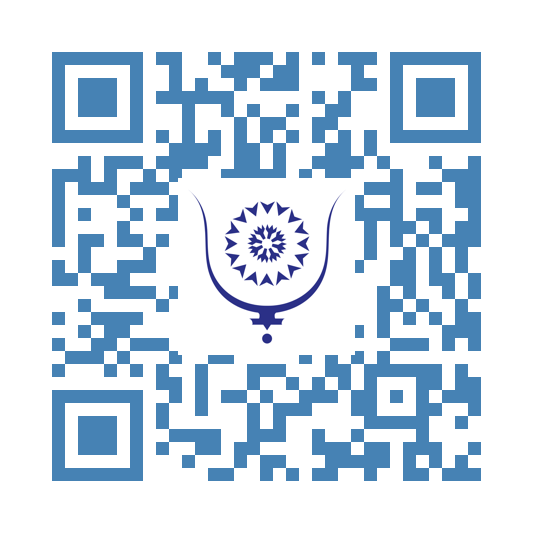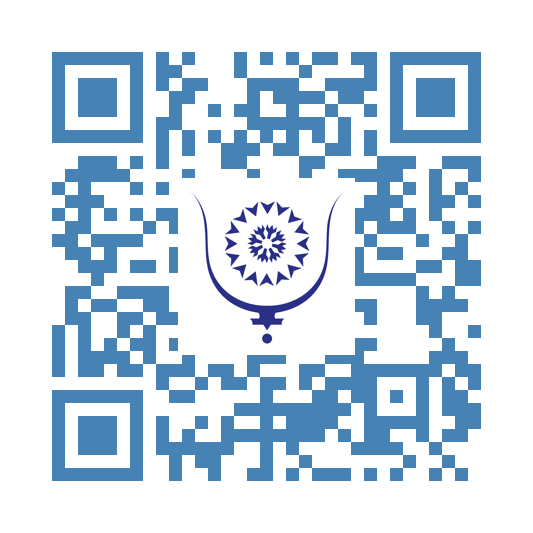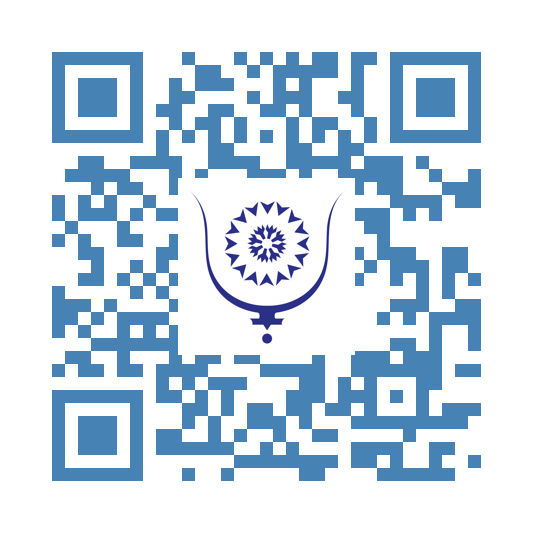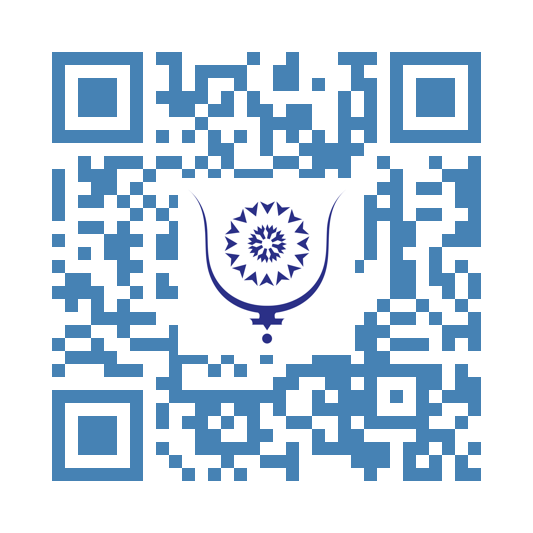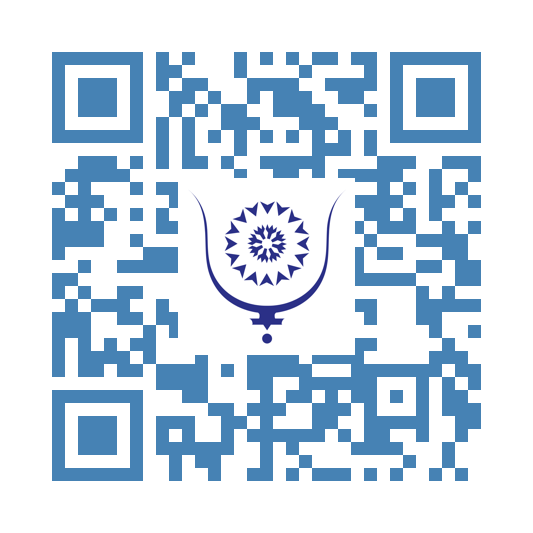Le Monde and Morocco: Deconstructing a Biased View of a Revered Monarchy...
278
The newspaper Le Monde, founded on the recommendation of General De Gaulle in the context of the Second World War in 1944, is internationally renowned for its investigative journalism and analytical capability. However, it often displays a biased approach when it focuses on the Kingdom of Morocco. The article published on August 24, 2025, titled "In Morocco, an atmosphere of end of reign for Mohammed VI," symptomatically illustrates this tendency, which deserves a response by also recalling the conflictual relationship the newspaper has had with the Kingdom almost since its inception. The impression is that it is probably the fact that Morocco is a Kingdom that bothers or disturbs the paper. The relationship to monarchy, particularly from the French left, is not unrelated to this ideological stance.
For a long time, Le Monde's editorial coverage of Morocco has avoided neutrality. Since the time of Hassan II, the paper frequently adopted a critical tone, sometimes unjustly severe, offering a European reading framework that often reduced the complex Moroccan political reality to a caricature. Between interpretations disconnected from reality and unfounded insinuations, the treatment of the country has often been limited to a black-and-white vision, marginalizing the concrete nuances of its evolutions and its centuries-old history. It must be reminded that the Kingdom, as a nation-state, existed long before what is today called France. It therefore has its own codes and its own evolution and worldview.
The newspaper's stance, inherited from a postcolonial reading marked by a basic socialism fixed on the image of an immutable authoritarian power and a society on the brink of upheaval. Journalists seem to relive by proxy the years before 1789. Conflations and romanticized interpretations are the rule.
Returning to the article, would the King of Morocco be a misunderstood sovereign? Is the Kingdom, for its part, so little known to the journalists of "Le Monde"? Would the secular Moroccan people simply be a copy of the people of medieval France? Or is it simply an ideological stance blinding the paper?
The mention of an "atmosphere of end of reign" in the recent article betrays profound ignorance coupled with a dubious hypothesis. In reality, no tangible sign of decline emerges, quite the opposite. The Moroccan people show notable attachment to their monarchy perceived as an essential pillar for stability, development, and national cohesion. A simple observation of social networks would have spared the authors from such errors, for since 1999, under the impetus of King Mohammed VI, Morocco has achieved important reforms. These are advances that took France two centuries. How can one forget to mention the country’s major achievements in such a short time:
- Sustained economic growth in several strategic sectors, generating jobs and sustainable prospects.
- Modernization of the family code (Moudawana), a symbol of major social progress, particularly regarding women's rights.
- Adoption of a transitional justice policy favoring reconciliation and healing historical wounds.
- Establishment of mandatory medical coverage, expanding access to healthcare for all.
- Assertive diplomacy recognized on the African continent and internationally, demonstrating a well-thought-out, forward-looking strategy.
- The Kingdom is preparing to host the Football World Cup, a sign of great trust from the international community.
These successes, however glaring, are overlooked by the authors because they contradict a sensationalist narrative of monarchical decline which appeals to some French circles nostalgic, under the surface, for the monarchy they killed. The article recklessly mixes rumors, outdated clichés, and baseless hypotheses, portraying power as frozen, aging, and oppressive. The author consciously ignores the multifaceted reality of a country at the crossroads of ancient traditions and sustained modernization. The depiction of a "twilight" reign reflects a condescending gaze, reminiscent of dominant stereotypes that often reduce the Arab and African world to narratives of instability and decline.
Contrary to the dark picture painted by Le Monde, contemporary Morocco under Mohammed VI pursues a dynamic trajectory, marked by concrete progress and real stakes, aligned with popular expectations. Rejection is not expressed through a distancing from the monarchy, but by a demand for thoughtful, gradual reforms that respect traditions and institutions. In this context, speaking of "end of reign" stems from a mistaken reading that distorts the actual function and role of monarchy today.
Here, it is essential to claim rigorous journalism based on documentary research and pluralism, finally freeing itself from postcolonial reflexes and a condescending gaze. Morocco cannot be reduced to an exotic subject of study or a testing ground for imported scenarios. More than a relic, the monarchy embodies a central lever of a nation in motion, led by lucid and committed leadership.
Le Monde’s editorial past seems to weigh heavily on its analysis of current events in Morocco. By assertively stating an "atmosphere of end of reign," the article disconnects its diagnosis from the social, economic, and political realities shaping the Kingdom. The achievements show a sincere will to articulate traditions and modernity, stability and popular aspirations, in a difficult regional environment that the country has managed with discernment.
By omitting these elements, favoring unfounded rumors and finished stereotypes, the text promotes an alarmist narrative that harms both truth and constructive dialogue, feeding prejudices inherited from an outdated postcolonial vision.
Thus, far from a predicted decline, Morocco traces a path based on conscientious leadership, rooted in a millennia-old history and attentive to current challenges, looking towards a hopeful future.
It is time for Le Monde to renew its gaze with honesty and respect, going beyond clichés and integrating the diversity of the Moroccan voice. The arrogance of an external view must never outweigh lived reality.
Readers of this newspaper, as with others when it comes to Morocco, deserve balanced, non-partisan, and open information reflecting the richness and depth of a society and a Kingdom in full transformation, faithful to its institutions and its sovereign.
Share:
Le Monde and Morocco: Deconstructing a Biased View of a Revered Monarchy...
copy:
https://bluwr.com/p/349771237
Ukraine and Sudan: Two Conflicts, Two Different Perspectives...
363
The entire Western world gathered in Washington a few days ago. Since his return, President Trump has been trying to save what remains of Ukraine, and the Europeans genuinely do not want this to happen behind their backs. Unable to play a decisive role, they at least want to be present. Their credibility is at stake, and above all, their image before the rest of the world.
Overheated by a Europe whose reach exceeds its power—a Europe increasingly powerless—Ukraine has endured and waged a war it believed it could win with Western support. To date, it has lost 20% of its territory, and it is far from over. Instead of dealing directly with Vladimir (Putin), Volodymyr (Zelensky) thought it wiser to seek support from those who had already been insufficient since delegating their defense to NATO, and thus to the United States. The Europeans will learn this the hard way: one cannot wage war without the means to do so.
That same world remains silent about what is happening in Sudan. It is considered less “interesting.” Two generals, generals in name only, have launched a militarized competition to seize power, just days after signing an agreement to share it. Since then, the situation has deteriorated. Every day, lives are lost, women are raped, and millions of people wander the desert, their only refuge.
For the Western world, perhaps—I emphasize perhaps—they are just Africans, mostly believing themselves Arabs, killing each other.
The war in Sudan, particularly in the Darfur region, remains one of the most tragic and deadly conflicts since its outbreak in April 2023. This war mainly pits two rival forces against each other: the Sudanese Armed Forces (SAF), led by Abdel Fattah al-Burhan, and the Rapid Support Forces (RSF), commanded by Mohamed Hamdan Dagalo, known as “Hemedti,” former leader of the Janjaweed militias. The latter, along with their allied Arab militias, are responsible for massive massacres, especially targeting the Massalit people and other non-Arab groups in Darfur. In essence, those who consider themselves Arab are killing and driving from their lands those they do not recognize as their own. The BBC has just released an investigation and documentary on this subject, which should stir collective conscience, if any human conscience remains willing to watch.
The conflict is primarily a power struggle between the two military leaders who, it should be recalled, had signed a pact to govern the country jointly. The sudden slide into armed clashes has spread to several regions, notably Darfur, where the RSF and their allies stand accused of grave abuses. The Janjaweed, militias identifying as Arab and formerly supported by former Sudanese President Omar al-Bashir, are active again under the RSF banner, committing ethnic-based violence openly. Also involved are the Sudan Liberation Movement (SLA/SLM), the historic rebels of Darfur, fragmented between Minni Minnawi and Abdelwahid Mohamed al-Nur.
The scale of the massacres is terrifying. According to the UN, in Al-Geneina, the capital of West Darfur, between 10,000 and 15,000 Massalit civilians were killed between June and November 2023 by the RSF and allied Arab militias. More broadly, over 150,000 have died in two years throughout Darfur, with 13 million displaced—half the Sudanese population—pushed to the brink of famine. NGOs like Doctors Without Borders warn of imminent massacres in cities such as El-Fasher, heavily besieged. The violence also includes destruction of civil infrastructure, schools, and mosques. Systematic sexual violence is another tragic facet of the massacre.
Following a deadly attack a few days ago, Doctors Without Borders just closed the only hospital still operating in Zalengei, the regional capital, making any medical activity impossible. This is not the first hospital to be forced to shut down.
Despite overwhelming evidence of war crimes and crimes against humanity, the international response remains mostly ineffective. Although the United States and the UN officially acknowledge the severity of the genocide, their direct interventions and sanctions remain timid. The African Union and the UN struggle to deploy forces capable of enforcing peace and upholding international law. Arab countries exert no notable pressure on Hemedti or Burhan, the latter having long wielded significant influence in Sudan.
This silence is interpreted by many observers as complicity, seen as a form of institutional racism that devalues African lives, especially those of the Massalit victims of the RSF. The fact that Hemedti and his allies claim an “Arab” identity while attacking so-called “African” groups, according to some, contributes to the indifference of Arab nations, more preoccupied with their regional dynamics than human rights. International Muslim organizations have also failed to take a forceful stand, despite frequent religious instrumentalization by the warring parties.
The conflict is also marked by a profound religious contradiction: murder, injustice, and war among Muslims are explicitly condemned by Islam, except in cases of self-defense or struggle against oppression. Yet, the massacres in Darfur are regularly denounced as contrary to these principles by Muslim intellectuals and religious leaders, though these condemnations have had little tangible effect on the violence.
This crisis has triggered the world’s largest current humanitarian emergency, with 13 million displaced. Access to medical care, food, and shelter remains grossly insufficient. Civilians live in extreme insecurity, caught in ethnic and political struggles manipulated by power-hungry warlords. The international community, Arab countries, and Muslim actors appear to be shirking their responsibilities, allowing this tragedy to continue in alarming silence.
This situation challenges not only global collective conscience but also the real capacity of international institutions to protect the most vulnerable populations from such vast violence. The situation in Darfur and greater Sudan is a stark and urgent call for attention.
The hope remains that the wars in both Ukraine and Sudan will end swiftly, as in both cases it is innocent generations paying the price of violent conflict.
Share:
Ukraine and Sudan: Two Conflicts, Two Different Perspectives...
copy:
https://bluwr.com/p/348759412
Love
416
Love!
Love is a destiny We hardly choose the moment to love It happens one evening or one morning
It happens by pure chance
It leaves you confused and haggard One day when you least expect
it You didn't see
it coming from afar It happens in the blink of an eye...
Without an appointment...
It makes you soft...
It makes you lose your mind...
It makes you run away from home Like fire,
it burns you with passion Love at first sight is legion
You'll get your share,
your ration Without logic...
But it's beautiful despite everything we endure
It's a pure feeling
When it's sincere It's magical
It's fantastic Despite its pains and sorrows,
its sleepless nights Until morning
It's the elixir of life It's endless ecstasy...
It happens to you by magic...
Content in loving takes you away from everything...
It besieges you from everywhere!
It takes over!
It will drive you crazy sooner or later!!!
Dr. Fouad Bouchareb El Medano / Tenerife August 24, 2025 Inspired by a text by Jalal Eddine Erroumi Arabic and Arabic All rights reserved
Share:
Love
copy:
https://bluwr.com/p/347790487
Greater Israel: A Threat to Peace and Stability...
493
The past few weeks have been marked by rather disturbing statements from certain Israeli leaders, reigniting the fundamental debate around the borders of the Hebrew state. Since its creation in 1948, following a UN decision, Israel has never officially and permanently defined its borders—a unique situation that undermines regional stability as well as the credibility of international law.
This absence of clear demarcation has severe consequences for a climate already marked by deep mistrust, both within the region and beyond. This situation is often exploited by those who do not stop calling Israel a "cancer" in the region.
Unlike the majority of states, Israel did not specify its borders in its declaration of independence. The lines recognized internationally today are those of the 1949 armistice, known as the "Green Line," but they have been constantly altered by wars and territorial expansions, notably after the Six-Day War in 1967. Since that date, Israel has occupied the West Bank, annexed East Jerusalem and the Golan Heights, while Gaza Strip, occupied and then evacuated in 2005, remains subjected to strict control. Following recent developments consequent to October 7 and Israel’s disproportionate response, the current government no longer hides its intention to proceed with a new annexation.
These recent declarations revive tensions, notably with references to "biblical borders." There is only one possible interpretation here: the outright annexation of the West Bank and a direct threat to neighboring countries.
Statements by Israeli Prime Minister Benjamin Netanyahu, Minister Smotrich, and other coalition members demonstrate a desire to maintain confusion, especially as ultranationalist voices continue to invoke the notion of "Greater Israel." This concept, based on religious texts, encompasses territories far beyond internationally recognized borders, potentially extending over the West Bank and even parts of Jordan, Lebanon, Syria, and Egypt.
This is all the more worrying as this position faces only ineffective or inaudible denunciations from Arab countries, weakened by repeated divisions and contradictions within Palestinian ranks, exhausted by the sabotage of initiatives on both sides, and aggravated by the barely disguised interventionism of Iran, which has succeeded in bribing a Palestinian faction that weakens the cause, undermining any possibility of peace. This faction, so radicalized, has become an objective ally of Israel and is labeled a terrorist group. Simultaneously, there is the complicit inaction of Western countries, who plead only half-heartedly against various abuses. Underlying this is an anachronistic construction, a 19th-century invention aimed at masking centuries of Christian antisemitism—whether Catholic, Orthodox, or Protestant: Judeo-Christianity. This striking conflation serves to oppose Western civilization to the rest of the world, notably the so-called Arab world. By this conflation, at least in appearance, a hatred that has persisted since the first Christian martyr Stephen, stoned by the Pharisees, is buried. A hatred that has never ceased.
Faced with this imbroglio, there is nothing but the chronic impotence of the UN.
The question of respect for international law and the definition of Israel’s borders should pose a major challenge to Western powers, especially the United States. Historically, the UN was at the origin of Israel’s creation with Resolution 181 of 1947, but today it proves powerless against the country’s expansion and voluntary absence of border delimitation. Resolution 242, demanding withdrawal from territories occupied in 1967, has never been implemented, just like all resolutions involving the Hebrew state. Western countries, though allies of Israel and holders of significant leverage, have so far refused to compel Israel to comply with international norms, limiting themselves to diplomatic calls for the resumption of negotiations and recognition of a Palestinian state, especially since the beginning of this summer. To this, Israeli leaders respond with categorical refusal and an intermingling of antisemitism with opposition to or criticism of a government’s politics. For the current government, there is no room for maneuver: either one accepts the Israeli diktat, even when it involves violations of international law and denial of Palestinians’ human rights, or one is antisemitic. People forget that Palestinians are Semites too...
This generates deplorable tensions with unfortunate consequences for many countries, as De Gaulle might have said.
If not stopped, these recent developments will undoubtedly increase the risk to global stability. Until now, popular dissent in the region has been controlled, even prohibited, but for how long?
The absence of recognized borders and the normalization of using religious narratives to legitimize possession of illegitimate lands constitute a direct threat to regional and global stability. To dare evoke "Greater Israel" is to legitimize expansionist aspirations, stir fear among neighbors, and fuel instability. In his recent speeches, the Israeli Foreign Minister does not hesitate to present the possibility of a Palestinian state as an existential threat to Israel. The current government does not want a Palestinian state, which remains the only foreseeable and logical solution for Israel’s very security, while maintaining ambiguity over territorial outlines can only perpetuate the conflict and block all prospects for lasting peace.
Beyond the strategic and religious considerations, it falls to the international community, particularly Western countries, to take responsibility and finally demand that Israel define its borders in accordance with international law, as is the case for every other state. Without this perspective, any political solution to the Israeli-Palestinian conflict will remain a dead letter, with the ongoing risk of global conflagration.
Israeli citizens must also take their responsibility. Continuing to vote for extremists is in no way a guarantee of security but rather a threat to the future of the children on both sides, even though a life in peace is possible. Many Israelis know this and shout it with all their might, but their calls remain unheard. It is with them that peace must be built, and they are numerous within Israel itself and across the world, particularly in the United States.
Share:
Greater Israel: A Threat to Peace and Stability...
copy:
https://bluwr.com/p/347269366
N’Djamena-Kousséri Half Marathon: A Message for the UN and Everyone Working for Peace in the World
715
Next September, more precisely on the 6th, an exceptional half marathon race will bring together the people of Kousséri, Cameroon, and N'Djamena, the capital of Chad. The athletes will start in front of the N’Djamena city hall and head towards Kousséri’s town hall, crossing the border between the two countries without any customs checkpoint or stop. On the contrary, authorities from both countries are collaborating to ensure that runners are supervised and secured on both sides under the best possible conditions. This will already be the third edition of this unprecedented race.
This sporting event, largely sponsored by the African Athletics Confederation, goes beyond simple competition: it embodies a powerful symbol of rapprochement and reunification of the peoples of Central Africa, highlighting the deep human dimension of such an initiative. Indeed, the populations on both sides of the border share so much in common that this administrative boundary, a colonial legacy, cannot separate them.
The strength of sport as a vector of unity is a slogan and a value we repeat on every occasion. But how many sporting events can truly embody it on the same scale as this unique race in the world?
Sport, by its universal nature, has the rare power to transcend cultural, political, and social barriers. But here, this is the only sporting event where it transcends borders.
In the border region between Cameroon and Chad, it is actually one and the same people who live here. Circumstances have made them two populations belonging to two different countries. On both sides of the border, people share history, traditions, and common challenges. In this context, which is not unique to this central African region, this half marathon represents far more than a simple endurance challenge. It is a bridge between communities often separated by artificial borders inherited from the colonial past.
Running together, across spaces that connect these two neighboring cities, symbolizes the will to overcome historical divisions. Every step is an invitation to solidarity, mutual understanding, and the celebration of shared values such as respect, brotherhood, and peace.
Kousséri and N'Djamena, though geographically close, have often been distanced by political tensions or administrative differences. But on the ground, in the heart of this race, the differences fade away. Runners, whether amateurs or professionals, from here or abroad since the race is international, share the same goal: moving forward together.
This sporting initiative also allows the meeting of communities, families, youth, local leaders, and institutional actors from both countries. It encourages cultural, economic, and social exchanges, paving the way for more sustainable partnerships and regional stability.
Here is a genuine message of hope for peace and reconciliation that the UN should hold up as an example, especially in the face of those who waste fortunes on endless conflicts. Examples are abundant...
The Kousséri-N'Djamena half marathon sends a clear and inspiring message: despite borders and differences, it is possible to build human bridges, consolidate lasting peace based on mutual understanding and cooperation.
In a world where ethnic and political conflicts often divide peoples, these moments of sporting gathering illustrate the power of dialogue and reconciliation. They express deep humanism, where each step taken on the ground is a step toward fraternization, toward rapprochement, toward a shared future.
Beyond athletic performance, the half marathon between Kousséri and N'Djamena on September 6th is a true celebration of human unity. By bringing together peoples with close origins yet sometimes divided, it invites reflection on our ability to overcome the borders that separate us to prioritize what should unite us: brotherhood, peace, and hope for a better world.
**The Human Dimension of Rapprochement and Reunification of Peoples finds a true embodiment in the N’Djamena-Kousséri Half Marathon, Bridge of Hope.**
For those who understand, greetings.
Share:
N’Djamena-Kousséri Half Marathon: A Message for the UN and Everyone Working for Peace in the World
copy:
https://bluwr.com/p/343913187
Ley Lines: The Invisible Currents of Earth’s Sacred Geometry
832
The concept of ley lines suggest the existence of invisible pathways of energy that crisscross the Earth, forming a network of subtle energy, ancient alignment, and spiritual resonance. Though the term “ley line” was first coined in 1921 by the English antiquarian Alfred Watkins (1855-1935)—who noticed that many ancient sites in the British landscape aligned along straight tracks—the concept is even older, echoing geomantic traditions across cultures that recognized the Earth as a living, breathing being with its own circulatory system of sacred force.
Basically, ley lines are believed to be channels of Earth's energy—similar to meridians in Traditional Chinese Medicine (TCM)—which connect sites of spiritual, astronomical, and historical significance. These may include standing stones, megalithic temples, pyramids, cathedrals, burial mounds, and crossroads. In the East, these currents are known as dragon lines or "lung mei" in Chinese geomancy (feng shui), while in South America, the Inca referred to similar energetic pathways as "ceques", radiating outward from the Coricancha Temple in Cusco.
From an esoteric standpoint, ley lines are neither arbitrary nor merely symbolic. They are understood to follow the electromagnetic shape of the planet—interacting with telluric currents, magnetic anomalies, and planetary grid systems. At certain points where multiple ley lines intersect, energy becomes concentrated, forming what are known as power nodes or vortex points. These nodes are believed to amplify consciousness, enhance ritual, facilitate spiritual contact, and sometimes thin the veil between the seen and unseen worlds. Places such as Stonehenge, the Giza Plateau, Machu Picchu, Glastonbury Tor, and Mount Shasta are frequently cited as residing on these potent intersections.
Mystically, ley lines represent more than geological curiosity—they are conduits of planetary consciousness, arteries of Gaia herself. In Hermetic and occult traditions, the Earth is viewed as a macrocosmic body, complete with chakras, nadis, and energetic organs. Just as the human body channels prana through subtle pathways, so too does the Earth transmit vital energy through her leys. To walk these lines consciously, or to work magically upon them, is to participate in the planet’s own alchemical process—aligning human intention with terrestrial intelligence.
In this context, the concept of ley lines resonates with the Gaia Theory, proposed by James Lovelock (1919–2022) and Lynn Margulis (1938–2011). This theory pictures Earth as a self-regulating, living system in which the biosphere, atmosphere, geosphere, and hydrosphere are deeply interconnected. Just as Gaia Theory suggests that the planet maintains balance through feedback loops, ley lines can be seen as subtle energetic channels through which this regulation occurs. From an esoteric perspective, these currents mirror Gaia’s own physiological processes—arteries circulating life-force and sustaining the interdependence of all beings within the planetary organism.
Many practitioners of geomancy, dowsing, and ritual magick believe that ley lines can be activated or aligned through offerings, ceremonies, sound, and sacred architecture. Temples and churches built upon these lines often reflect celestial alignments, forming a harmony between heaven and earth. Some traditions hold that ancient initiates placed monuments at ley crossings not merely as markers, but as resonant structures designed to stabilize or modulate the flow of planetary energy.
There is also a mythical and cosmological layer to ley line theory. In Arthurian legends, Glastonbury is not only a place on a map but a threshold to Avalon—an invisible world accessible through altered states or alignment with the land’s living current. In this way, ley lines serve as the nervous system of a planetary intelligence, a kind of spiritual cartography through which initiates navigate both terrestrial and cosmic realities.
Though scientific consensus does not validate ley lines as measurable phenomena, their enduring presence in sacred geography, myth, and ritual suggests they function on a level beyond conventional empiricism. They invite the sensitive and the intuitive to perceive the Earth not as inert matter, but as a divine organism—alive, aware, and in communion with those who learn to walk her lines in reverence.
Share:
Ley Lines: The Invisible Currents of Earth’s Sacred Geometry
copy:
https://bluwr.com/p/341332064

